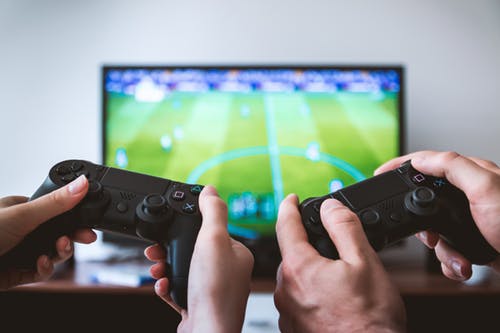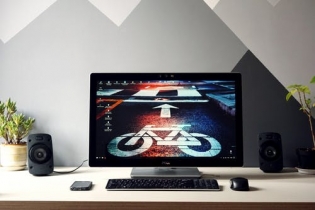A powerful PC requires a powerful monitor. That’s elementary. But then the question is, how powerful should your monitor be? What specs do you need to look out for? What is the best brand in monitors today? Should you get a 1080p 144 Hz instead or indulge in 4K 60Hz?
Before you even dive into the monitor market, you need to check out your PC first. If it’s powerful enough to run more than 60 FPS, then, by all means, get a high-budget gaming monitor. But if you buy a gaming monitor that’s too much to handle for your PC, you’ll be met with disappointment.
In this article, we’ll help you understand what makes a gaming monitor great through various comparisons. Once you’ve finished reading, you should have at least some basic knowledge on gaming monitors.
We’ll put everything in layman’s terms so if you’re a new buyer, you don’t get overwhelmed and confused too much with the words here and there.
And if you do know what to look for, then check out the list of the best ones in the market right now.
Are expensive monitors really worth it?
Depending on your specs, you need to know that the more powerful your PC is, the more powerful the monitor you should get. In other words, if your PC is NASA-powered, then get a monitor that is equally NASA-powered. If your PC can run Tekken 7 in at least the lowest settings at 60 fps, then get a monitor that can do so. And if it’s something mid range, then you don’t need to dish out a lot of money; even a 1080p 60 Hz monitor will suffice.
However, some monitors are expensive just because of their brand’s credibility. In other words, just because a monitor is expensive because of the brand, it doesn’t mean it’s a guaranteed god-tier monitor. As always, you need to look through forums and discussions from people that have experiences with these monitors.
.
Do Brands Matter?
Yes...and no at the same time. You see, gaming monitor brands are full of tried-and-tested manufacturers that have been doing this for years. ASUS, MSI, ViewSonic, Hanns G, Razer - these are a few of the biggest brands that make great monitors, earning multiple awards and critical praise. For example, MSI gets a pat on the back for becoming the fastest growing monitor brand in the world (click here to know more about the details) and the ASUS ROG for winning the Gamesradar award for best gaming monitor back in 2018.
But sometimes you feel skeptical about these brands because of their prices, resorting you in checking out more obscure brand names. Well, to summarize it, lesser-known brands that sell monitors at cheap prices have a high probability of bad products.
.
.
Is 4K always better?
Of course, 4K resolution is the granddaddy of pixel-perfect resolutions (until 8K arrives in the future), but that doesn’t mean it should be your priority.
Sure, everything looks crystal clear but if you happen to be a competitive player who wants nothing but wins in a fast-paced game like Apex Legends, Street Fighter V or Rainbow Six: Siege you need to rely on refresh rate more.
Here are the standard numbers for full HD:
1080p: 1920 x 1080
2K: 2560 x 1440
4K: 3840 x 2160.
If you value graphics over everything else in gaming, then 4K is the best for you. But if not, then you should know that refresh rate and lesser input lag are more important than anything else when it comes to the display. So, that leads us to our next question:
.

Why is refresh rate important?
As you can see, there are some PC gamers that forget about the refresh rate and focus on the resolution because the ads never shut up about “INDULGE IN 4K RESOLUTIONS...”
For experienced PC users, they will always tell you that refresh rate is everything, especially if you playing multiplayer and any existing competitive game.
So, what happens if your monitor has a low refresh rate? This is what happens:
When your PC transfers more video frames than what your monitor can handle, it results in screen tearing. For example, your monitor has a refresh rate of 60Hz but if the PC transfers video frames beyond that limit, your monitor will display out-of-sync images.
When you have a good refresh rate, your game’s performance will result in less input lag. Refresh rates are the fresh prince of gaming.
To prevent this from happening, you need to configure your game’s refresh settings to a fixed limit. If your monitor can only handle 60Hz, cap your game to just 60 fps and activate-sync. But there’s a catch to activating v-sync: if you do this, you will notice a huge game performance slowdown since your PC needs to pace itself with the monitor’s low refresh rate.
Streamers and professional eSports players like to use a 1080p monitor with a refresh rate of 240 Hz instead than 4K 144 Hz. That’s because reflexes matter way more than the game’s presentation. In some cases, players even disable certain particle effects and other renderings so the game can run at peak performance levels. However, even with an expensive PC, the rig can’t go beyond 240Hz (at least for now) and that makes it very safe in terms of syncing.
.
Is it necessary to buy a monitor with Nvidia G-Sync/AMD Freesync?
If you spot one, then by all means get it. Why? Because as we previously mentioned, fixing your game to a certain refresh rate limit and v-sync on will affect your game’s performance. But with the G-Sync or Freesync, it gets rid of the performance issues despite the fixed limit and activated v-sync.
Gaming monitors nowadays include these within the specs as modern standards. However, a monitor with the Nvidia G-Sync is more expensive than a monitor without one - as in around $100 to $150 more. But for the AMD Freesync, there’s no price increase - a kudos for the PC with an AMD processor.
.
What’s the ideal screen size of a gaming monitor?
Most monitors are between 21” to 27” which are good enough for a fine gaming experience. Anything wider than that won’t be ideal for staring at the monitor up-close. Whereareas, anything lower between those numbers means that there’s no point for higher resolutions.
But to be fair, all you need is a 24” monitor. If you want to go larger than that, then make sure your computer’s processor can perform above and beyond to prevent aliasing from displaying on the screen.
.
Recap
In the end, the ideal gaming monitor is all up to you. But take note that if you have an expensive PC with a fast processor, then you need an equally expensive PC with a fast refresh rate. The brand doesn’t matter as long as you take note of the specs we’ve discussed.
But if you ask us the sweet spot of the right gaming monitor with having to shell out so much cash, go for one with 144Hz at 2560 x 1440 resolution. Trust us, it’s more than enough to experience great gaming.
.








